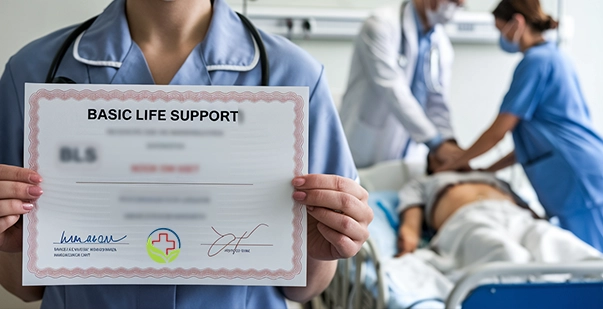Bloodborne pathogens are harmful microorganisms. These are found mainly in human blood. It can cause diseases in the human body system. These pathogens can be transferred between humans by direct contact with the blood of an infected person. Needlestick, Razors, and other sharp objects are other mediums by which a person can contract the disease. Examples of the bloodborne pathogens include but are not limited to Human Immuno Deficiency Virus (HIV), Hepatitis C Virus(HCV), and Hepatitis B Virus (HBV).
By the definition given above, one can realize that these bloodborne pathogens can be easily contracted. These can be contracted in the industry, hospital, or any workplace that involves the use of sharp objects regularly. Hence in order to reduce the risk of exposure of employees to these bloodborne pathogens the Occupational Safety and Health Administration (OSHA) has made provisions in the OSHA’s Bloodborne Pathogen Standard (29 CFR 1910.1030).
Here an employer must have plans put in place to prevent exposure of employees with well-coordinated details on Employee protection. The employer’s plan must explain in plain detail. How the workplace would put in place personal protective clothing, hepatitis B vaccinations, medical surveillance, employee training, and the other requirements as stated in the OSHA Blood Borne Pathogen Standard.
If all the requirements of the nationally accepted OSHA standard (29 CFR 1910.1030) are met then the Occupational Safety and Health Administration (OSHA) would offer the company or organization a bloodborne pathogen certification for the control of bloodborne pathogens in the workplace.
HOW TO CONTROL BLOODBORNE PATHOGENS IN THE WORKPLACE:
- Contaminated surfaces and equipment should be cleaned and disinfected. The best option for an infected surface or equipment is disposal. In the case whereby the disposal would be detrimental to the workplace then the use of a good disinfectant should suffice.
- Employee training. The employees in a workplace should be trained on safety, protective clothing, what to do during an accident, and what to do when exposed to infections. Training the employees would foster a more cautious environment.
- Hepatitis B Vaccinations. This is essential for every employee during the first day of resumption into the workplace and regular shots to help strengthen the immune system against the Hepatitis B virus Pathogen.
- Follow up on individuals that have been exposed to the workplace.
- There should standards for healthcare workers, put in place for contact with patients with open injuries and heavy bleeding to prevent contact with blood.
- There should not be eating or drinking in the workplace. The workplace should adopt habits that would reduce exposure of the employees to the bloodborne pathogen.
- The use of personal protective equipment such as gloves, overalls should be enforced in the workplace.
- Make available Post Exposure Prophylaxis in the workplace. Not just available but also easy to reach in the case of an emergency.
What to do when exposed?
- Rinse off the exposed body part thoroughly with soap and water.
- Report exposure to the relevant authorities so they would administer the proper follow-up.
Check out the online bloodborne pathogens course today to learn more!










